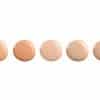- Key Points
- What Are Face Serums?
- How Can You Clean Your Skin With Serums?
- Can You Apply a Serum on Your Face Every Day?
- How Can You Prepare Your Skin for a Serum?
- How To Pick the Right Serum
- How Many Drops of Serum Should You Use?
- How To Apply Serum on the Face
- Do You Leave Serum on Your Face?
- How Long Should You Leave Serum on Your Face?
- Can You Combine Face Serums?
- What Serum Helps Clear Skin?
- Skincare Products Are Not Just for the Face
Key Points
-
Face serums are revitalizing nutrition for your skin.
-
Apply skin serums after cleansing but before moisturizing.
-
Combining serums in your skincare routine makes powerful duos but may increase the risk of irritation.
Skincare products are like food for your skin. Your skin needs nourishment every day to look, feel, and stay healthy. The best way to maintain healthy skin is by feeding it the right ingredients. While skincare basics — cleansing, moisturizing, and applying sunscreen — go a long way in maintaining your skin's health, face serums are like healing foods that provide a nutritional makeover.
If you're in your mid 20's, your skin is starting to lose the proteins that maintain a healthy, plump complexion. You're slowly producing less collagen and elastin resulting in less skin hydration and elasticity. Loss of these fibers also leads to wrinkle-ridden skin. As this depletion occurs, your skin begins to starve for juicy serums ready to satisfy its hunger for youthful, glowing skin.
What Are Face Serums?
Face serums are skin care treatments that usually contain antioxidants and vitamins that protect and improve the appearance of the skin. These skincare products are typically lightweight with a gel-like or watery consistency. They deliver active ingredients to target specific skin concerns, such as various signs of aging, sun damage, acne scars, redness, dryness, and more.
How Can You Clean Your Skin With Serums?
Serums don't cleanse the face; that's not what they're meant for. All serums provide different benefits that help protect and improve the skin. The serums closest to providing a cleanse-like purpose are exfoliating serums that contain chemical acids to dissolve dead skin cells.
You're probably wondering what's the point of using an exfoliating serum if you already use an exfoliant in your skincare routine. While physical or chemical exfoliants focus on eliminating old skin cells, exfoliating serums may offer both exfoliating and anti-aging benefits.
For example, some serums with exfoliating acids also contain antioxidants like vitamin C. Topical vitamin C promotes collagen production, neutralizes free radicals, brightens the skin, and evens out skin texture and tone. This ingredient also reduces dark spots, fine lines, wrinkles, and dark circles.
Avoid using exfoliating serums with other exfoliating products at the same time as using them sequentially guarantees angry, dry, and irritated skin. Most dermatologists recommend exfoliating a few times a week, with one time per week being the minimum and three times being the maximum. How frequently you exfoliate depends on your skin type.
If you have dry, sensitive, or extra-sensitive skin, limit using your exfoliating serums to once a week. Also, stop using other exfoliating products if you're going to start using an exfoliating serum. The more exfoliating products you have in your skincare routine, the more prone your skin is to redness and irritation.
Can You Apply a Serum on Your Face Every Day?
Yes. You can apply a serum on your face every day, as long as it doesn't contain exfoliating ingredients. Some serums are safe to use up to two times a day. Deciding whether to apply a serum in the morning or night depends on its formula. Some serums work best during the day while others are most suited for the night.
How Can You Prepare Your Skin for a Serum?
The best way to prepare your skin for serum is to cleanse and exfoliate first. Cleansing and exfoliating removes surface impurities (dirt oil, makeup, etc.), leaving the skin ready and permeable for absorbing your skincare products more efficiently. If you want to maximize the absorption of your serums into your face, leave your skin a little damp after cleansing.
Applying skincare serums to damp skin is a must. Serums with hyaluronic acid — a hydrating ingredient that attracts water — work best on damp skin. According to dermatologist Dr. Muneeb Shah, "Hyaluronic acid is only a humectant… it pulls in water to it and it holds onto it but if you don't follow it with something over the top of it you lose that water to the environment."
He also explains that hyaluronic acid may pull water from your skin if you apply it to dry skin, leaving your face even more dehydrated than before. To prevent dryness and make hyaluronic acid truly work for you, Dr. Shah stresses the importance of sealing it in with an emollient or an occlusive moisturizer to prevent the skin from losing water.
How To Pick the Right Serum
Choosing the correct serum for your skin is important yet difficult. There are way too many serums to choose from, but you can narrow down your search by tailoring it to your skin type, skin concerns, and budget.
While hyaluronic acid and vitamin C serums are amongst the most popular face serums, there are also glycerin and retinol serums to choose from. Similar to hyaluronic acid, glycerin is a hydrating ingredient that replenishes moisture in dry skin. Retinol serums may have more of a cream-based consistency.
How Many Drops of Serum Should You Use?
If you're using a serum bottle with a pump, you'll need about a full pea-sized amount (about one to two pumps) to cover your entire face. If you have a serum bottle with a drop cap, apply three to four drops.
If your skin experiences irritation after applying the product, that's your indicator that you've probably used too much. So don't forget to always start with small amounts as a little goes a long way. It's not about quantity; it's about consistency.
How To Apply Serum on the Face
There are a couple of ways to apply face serums. The techniques you use depend on your preference and the serum's consistency.
Also, remember that some serums go on damp skin and some on dry skin. As mentioned before, hyaluronic acid must go on damp skin while Vitamin C serums must go on dry skin.
To limit irritation, retinol-based products always go on dry skin, so it's best to apply retinol serums to dry skin too. Save retinol serums for your evening or nighttime skincare routine. Make sure to follow the product's instructions on how to apply your serum or follow a dermatologist's recommendations for the best application method based on your serum.
How To Apply Serum with a Pump
If you have a serum with a pump container, apply the product on the back of your hand to ensure you get the pea-sized amount before you apply it to your face. Next, take tiny amounts and apply them as dots on your face and then gently blend them into your skin.
How To Apply Serum with a Dropper
If you have a serum dropper, apply the drops onto your fingertips, and rub your fingertips together. Then spread them evenly onto your face or pat the product onto your skin. Or do both: pat and blend.
Some people apply the drops directly onto their faces with the dropper cap and then smooth them into the skin. If you opt for this method, be careful with the drops as they may quickly run down your face. Avoid getting the drops into your eyes. Make sure your hands are clean before applying serums with your fingers or palms.
Some serums absorb into the skin faster than others, so it's best to be quick when applying your serums to avoid the product absorbing into your hands. The quicker you spread the serum onto your face the better. The thinner serums absorb faster than thicker serums, so make sure to keep this in mind when choosing an application method.
Another technique is applying one drop at a time to avoid the other drops from quickly absorbing into one place before blending them evenly throughout the face. A rule of thumb is to apply one drop to each quadrant of the face: left and right cheeks, forehead, and through the center of the face (forehead, nose, and chin areas).
Check out this video tutorial on how Houston-based dermatologist Dr. Dray applies face serums.
Do You Leave Serum on Your Face?
Leave serums on your face. Serums aren't rinse-off products, so make sure to leave them on your face. If you rinse off your serum, you are literally washing the beneficial active ingredients down the drain. That is a waste of product and money. Not all face serums are cheap, so don't be wasting them.
Say you have leftover serum on your palms and fingers after applying it to your face. Instead of rinsing your hands, apply the serum remnants to your neck and chest. Every drop counts!
How Long Should You Leave Serum on Your Face?
After washing your face in the morning, apply your serum and leave it on to protect your face throughout the entire day. Wash it off during your night skincare routine and apply a serum again on your face to let it work its magic overnight.
There's no rule on how long to wait between applying a serum and moisturizer. As a general guideline, wait about one minute to let the serum fully absorb into your skin before you moisturize.
Can You Combine Face Serums?
Your hunger for nourished, flawless skin may drive you to order all the serums on the skincare menu. Overstuffing your skin with layers on top of layers of serums causes redness and irritation, especially if you overuse exfoliating or retinol serums. Overusing or combining certain serums on sensitive skin is a recipe for disaster, to say the least.
Target one or two skin concerns simultaneously instead of tackling them all at once with a multitude of serums. It's okay to use more than one serum in your skincare routine, especially if you're not new to them. Just be cautious about the ingredients you decide to blend.
Alternating your facial serums on different days is a good way to add them to your skincare routine while reducing the risk of irritation. Perhaps one day you apply a vitamin C serum on the face and apply a hyaluronic acid serum the next day. Or apply one serum in the morning and a different one at night.
Combining vitamin C serums with retinol or retinoids is also a great skincare duo. It's best to apply vitamin C serum in the morning to protect your skin from free radical damage and use a retinol serum at night to repair your skin during your beauty sleep.
In short, don't be afraid to carefully create a cocktail of two different face serums, but try to spread them out in your routine.
When in doubt, ask a skin professional about which active ingredients are safe to mix.
What Serum Helps Clear Skin?
If you want to clear acne, exfoliating serums and retinol serums may help. Retinol and exfoliating products are some of the best over-the-counter options for clearing acne.
The exfoliating serums do away with pore-clogging dead skin cells, improving acne. They also give you a brighter complexion, improve skin texture and tone, and fight dark spots.
Retinols or retinoids remove dead skin buildup, reduce sebum production, and decrease inflammation which are the culprits of acne. In short, they help reduce and prevent acne, giving you clear skin.
Skincare Products Are Not Just for the Face
Apply your skincare serums to your neck and chest area too, your skin will thank you for it later. These areas of your body are thin and are often exposed to the sun's harmful rays, so make sure to give them some tender loving care too. Just be careful when applying skincare products to these areas and use smaller amounts than what you would normally use on your face.
Plus, it's not sightly to have visible sun damage on your neck and chest area while having a flawless facial complexion. You want all these areas to match and progress together with the power of your skin-repairing serums and other skincare products.










